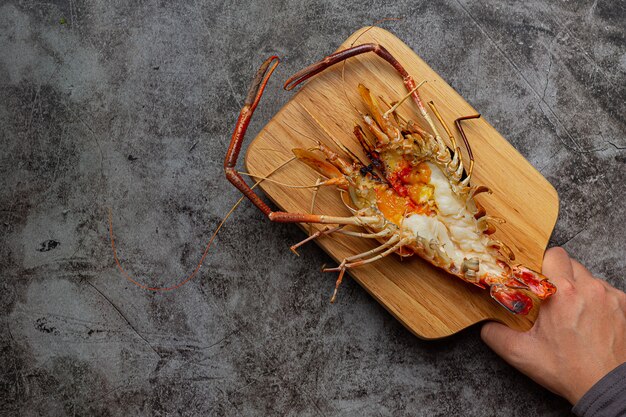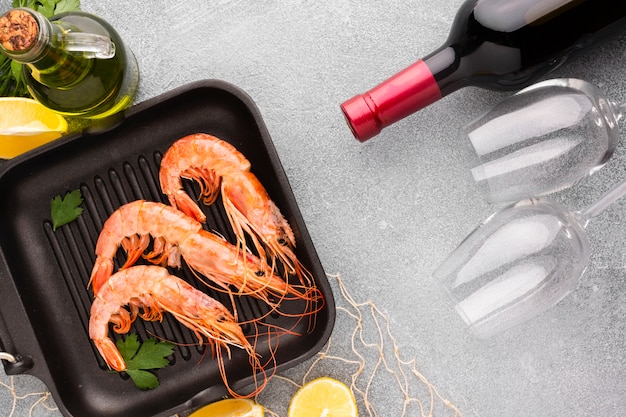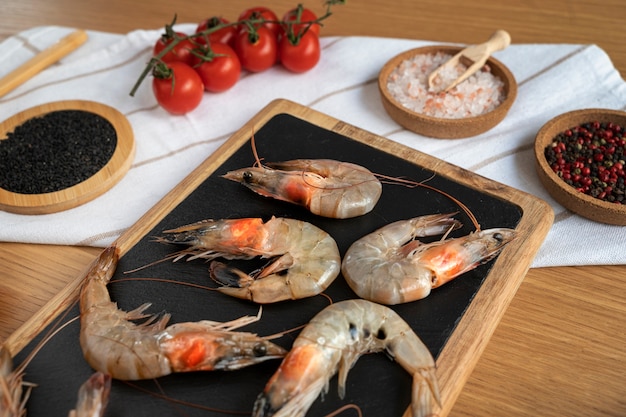Part 1: Choosing Your Lobster

The Big Decision: Live or Cooked?
The very first thing you need to decide is whether you want to tackle a live lobster or go for a pre-cooked option. Now, I’m a big fan of live lobsters. They’re a bit more work, sure, but the flavour is just… well, it’s a whole other level of delicious. It’s that fresh-from-the-sea flavour that really sets it apart. But, I understand that not everyone is comfortable with handling live lobsters. The thought of killing it, even humanely, can be a bit off-putting. pre-cooked lobsters are a great alternative, especially if you’re pressed for time or simply prefer a less hands-on approach. They’re already cooked, ready to go, and make for a hassle-free meal. The flavour is great, though you might find it less intense compared to a live lobster. Ultimately, the choice is yours, and there’s no right or wrong answer.Getting the Right Lobster: What to Look For
If you're going for a live lobster, there are a few things you should look for to ensure you're getting a fresh, high-quality catch. First, you want a lobster that’s lively, not sluggish or lethargic. Give it a gentle poke with your finger. A fresh lobster will spring back quickly, indicating it’s full of life.Now, take a close look at the shell. It should be hard and shiny, with no cracks or soft spots. A soft shell means it’s either not fresh or might be molting, and the meat won't be as firm. Lastly, check the tail. If it’s curled tightly under the body, it’s a good sign. A floppy tail might indicate a less-than-fresh lobster. Remember, a fresh lobster is key to a delicious meal!Lobster Sizes and Weights
Lobsters are typically sold by weight, and the price can vary depending on their size. A smaller lobster, say around 1-1.5 pounds, is perfect for a cosy dinner for two. If you’re hosting a gathering, a bigger lobster in the 2-3 pound range will provide enough meat for 3-4 people. For a real lobster feast, consider those 3-4 pound behemoths that can feed a crowd of 4-6!Here's a handy table to help you decide:
| Size (pounds) | Serving size |
|---|---|
| 1-1.5 | 1-2 people |
| 2-3 | 3-4 people |
| 3-4 | 4-6 people |
Part 2: Cooking Your Lobster

Method 1: Steaming
My absolute go-to method is steaming. It's simple, fast, and produces the most succulent, juicy lobster. You can easily steam your lobster on the stovetop with a large pot or a steamer basket. Here's how I do it: - Fill a large pot with about 2 inches of water. The water level shouldn’t exceed this, otherwise, you're essentially boiling the lobster.
- Add a few slices of lemon, some fresh herbs like thyme or bay leaves, and a pinch of salt. The aromatics add a beautiful fragrance and enhance the lobster's flavour.
- Bring the water to a roaring boil, making sure it's bubbling vigorously.
- Place your lobster in a steamer basket or a heatproof bowl and carefully place it over the boiling water. It’s important that the lobster isn’t touching the water, or it'll essentially boil instead of steam.
- Cover the pot tightly with a lid and let the steam work its magic for 10-15 minutes, or until the meat is cooked through. The cooking time will depend on the lobster's size.
- To check for doneness, gently poke the lobster’s tail. The meat should feel firm and white, not soft or mushy.
Method 2: Boiling
Boiling is another classic method, but it can sometimes result in slightly tougher meat compared to steaming. However, if you're short on time, it's a perfectly acceptable option. - Fill a large pot with enough water to cover the lobster completely.
- Add a generous pinch of salt and your favourite aromatics like lemon, garlic, or herbs to the water. The salt helps season the lobster, while the aromatics add depth of flavour.
- Bring the water to a rolling boil.
- Carefully lower the lobster into the boiling water. Use tongs or a heatproof ladle to avoid getting splashed by the boiling water.
- Boil the lobster for 10-15 minutes, depending on its size. Bigger lobsters need a bit more time to cook through.
- Remove the lobster from the pot and let it cool slightly before cracking it open.
Method 3: Grilling
grilling lobster adds a smoky flavour that just takes things to another level. It’s a fantastic choice for outdoor entertaining, especially during the warmer months. - Preheat your grill to medium-high heat.
- Split the lobster in half lengthwise using a sharp chef’s knife. Carefully remove the intestines, which are found along the back of the lobster. You can discard them or, if you’re feeling adventurous, you can try cooking the tomalley (the lobster’s liver and pancreas). It’s a delicacy, but be warned, it has a strong, slightly metallic flavour.
- Season the lobster halves generously with salt, pepper, and any other herbs or spices you like. I often add a touch of garlic and paprika for a bolder flavour profile.
- Place the lobster halves on the preheated grill, flesh side down. Close the grill lid to ensure even cooking.
- Grill for 5-7 minutes, then flip the halves and grill for another 5-7 minutes, or until the meat is cooked through and the shell is slightly charred.
Method 4: Baking
Baking is a fantastic option if you prefer a more hands-off approach to cooking lobster. It's simple, and the results are consistently delicious. - Preheat your oven to 375°F (190°C).
- Split the lobster in half lengthwise and remove the intestines.
- Season the lobster with salt, pepper, and your favourite herbs and spices. I love adding a pinch of cayenne pepper for a subtle kick.
- Place the lobster halves on a baking sheet lined with parchment paper. This prevents sticking and makes for easy cleanup.
- Bake the lobster for 15-20 minutes, or until the meat is cooked through.
Part 3: Serving Up Your Lobster

The Classic Presentation:
The classic way to serve lobster is on a platter. It's simple yet elegant, and allows you to showcase the beauty of the cooked lobster. Add a sprinkle of chopped parsley for colour and freshness, and a few lemon wedges for a bright, citrusy touch. And let’s not forget the melted butter! Nothing beats a generous pool of warm, buttery goodness to dip the lobster meat in. I usually keep it warm in a small ramekin on the side.side dishes to Pair with Your Lobster
This is where you can truly unleash your culinary creativity. I like to keep it simple and focus on fresh, seasonal flavours that complement the lobster’s delicate taste. Here are a few of my favourites: - Classic: steamed asparagus or sauteed spinach, a simple side of buttered new potatoes, or a green salad with a light vinaigrette dressing. These options offer a refreshing contrast to the rich lobster meat.
- Elegant: A creamy risotto with lemon and herbs, or a light pasta salad with cherry tomatoes and basil. These dishes add a touch of sophistication to your lobster meal.
- Bold: Spicy corn on the cob, grilled zucchini with balsamic glaze, or a hearty bean salad. These options add a touch of boldness and depth of flavour.
Dipping Sauces: Taking It Up a Notch
Melted butter is a classic for a reason, but there are so many other dipping sauces that can elevate your lobster experience. Here are a few of my go-to options: - Garlic Butter: Simple yet delicious! Just add a few cloves of minced garlic to your melted butter.
- Lemon-Herb Butter: Bright and refreshing! Add a squeeze of lemon juice, some fresh herbs like thyme or parsley, and a pinch of salt and pepper to your melted butter.
- Spicy Butter: For those who love a little heat, add a dash of cayenne pepper or chili flakes to your melted butter.
And if you want to take it a step further, try making a compound butter. Simply mix softened butter with herbs, spices, and other flavourings. Then, chill it until firm and slice it into beautiful pats. It’s a great way to add a burst of flavour to your lobster. Part 4: Cracking Open Your Lobster
Now, the moment of truth! It’s time to get to the delicious meat. Here’s a simple technique to crack open your lobster and extract those juicy morsels. - The Tail: Grab the tail and twist it off the body. You’ll hear a satisfying crack. Now, use a lobster cracker to crack open the tail. If you don’t have a lobster cracker, you can use a heavy knife or even a nutcracker, though it might take a bit more effort. Once it's cracked open, use a fork to pick out the meat.
- The Claws: Crack the claws using a lobster cracker, aiming for the joint. It might take a few whacks to get it open, but with some persistence, you’ll succeed. Once cracked, use a fork to extract the meat. Be careful though, it can be a bit messy!
- The Body: The body is where it gets a bit trickier. There’s some delicious meat tucked away in there, but it takes a bit more work to extract. You can twist the body to detach the head, then crack it open and pick out the meat. Alternatively, you can split the body lengthwise with a knife and use a fork to pick out the meat. But be warned, it can be quite messy!
If you're feeling adventurous, you can even try extracting the tomalley. It’s found in the head, and it’s considered a delicacy for its bold, almost metallic flavour. It's more challenging to extract, but worth it if you enjoy bold flavours. Part 5: Beyond the Basics: Delicious Recipes
Lobster is so versatile! Here are a few recipes to inspire your next lobster adventure. - lobster bisque: A classic, creamy, and rich soup that's perfect for a cold winter’s day. Use smaller lobsters for this recipe, as you'll need to cook the whole lobster, including the shells. You can find plenty of great lobster bisque recipes online or in cookbooks.
- lobster mac and cheese: A comfort food favourite, elevated with the addition of succulent lobster meat. This dish is perfect for a special occasion or a dinner party. You can find countless variations online, and you can even add ingredients like mushrooms or spinach for a twist.
- lobster rolls: A New England staple, perfect for a summer picnic or a casual lunch. You can use cooked lobster meat or grill your own lobster and make your own rolls. Recipes abound online, and you can experiment with different sauces and toppings.
- Lobster Paella: A Spanish rice dish bursting with flavour. You can add lobster meat to a traditional paella recipe, or you can find a recipe specifically for lobster paella. It’s a great dish for a group gathering, as it can be cooked in a large pan.
Part 6: Leftover Lobster: What to do with it
You’ve had a delicious lobster meal, but you have some leftover lobster. Don’t waste it! There are plenty of creative ways to use up leftover lobster. - Lobster Salad: A classic way to use leftover lobster. Simply mix the lobster meat with mayonnaise, celery, and onion. Serve it on bread, crackers, or in lettuce cups.
- Lobster Pizza: A unique and delicious twist on pizza. Add the lobster meat to your favourite pizza crust and top it with your favourite cheese and toppings.
- Lobster Pasta: Toss leftover lobster meat with your favourite pasta sauce and pasta. You can use a simple marinara sauce, a creamy alfredo sauce, or even a spicy arrabiata sauce.
- Lobster Quesadillas: A fun and easy way to use leftover lobster. Just add the lobster meat to your favourite quesadilla recipe.
The possibilities are endless! Get creative and have fun with it. You can even freeze leftover lobster for later use.Part 7: Tips and Tricks
Here are some tips and tricks that I’ve learned over the years to make your lobster cooking experience even better. - Storing Lobster: If you’re buying a live lobster, keep it in the refrigerator for up to two days. If you’re buying a pre-cooked lobster, keep it refrigerated and use it within a few days.
- Killing a Live Lobster: If you’re cooking a live lobster, you can humanely kill it by plunging it into a pot of boiling water or by using a sharp knife to sever its head.
- Removing the Intestines: Always remove the intestines (also known as the “tomalley”) before cooking the lobster. You can do this by splitting the lobster lengthwise or by inserting a sharp knife into the body and pulling out the intestines.
- Don’t Overcook It: Lobster cooks quickly, so it's easy to overcook it. Make sure to check the lobster for doneness by poking it with a fork or a knife. The meat should be firm and white.
- Don’t Be Afraid to Get Messy: Lobster can be a bit messy, so don’t worry about making a mess. Just enjoy the experience and have fun!
Part 8: Lobster Etiquette
Let's talk about the etiquette of eating lobster. It’s not as simple as grabbing a claw and digging in. Here are a few pointers to make your dining experience more enjoyable for everyone at the table. - Use a Lobster Cracker: Lobster crackers are specially designed for cracking open lobster shells. Use them to break the claws and tail, but be careful not to pinch your fingers!
- Don't Suck the Claws: Some people enjoy sucking the meat out of the claws, but it can be a bit messy! It’s best to use a fork to extract the meat.
- Be Polite: Eating lobster can be a bit messy, so be mindful of others at the table and try to avoid spraying them with bits of shell or sauce.
- Don't Be Afraid to Ask for Help: If you’re not sure how to eat a lobster, don’t be afraid to ask for help. Your host or a fellow diner can show you the ropes.
Now, you're ready to tackle your next lobster adventure! Remember, it’s a treat, so enjoy the process, embrace the mess, and savour the delicious flavours. Happy cooking!FAQs
1. How long does it take to cook a lobster?
The cooking time for lobster depends on its size. A smaller lobster (1-1.5 pounds) will cook in about 10-12 minutes, while a larger lobster (2-3 pounds) will take 15-20 minutes. Always check the lobster for doneness by poking it with a fork or a knife. The meat should be firm and white, not soft or mushy.
2. How do I know if my lobster is cooked?
The meat should be firm and white, and the shell should be bright red. If you poke the lobster with a fork, the meat should spring back. You can also check the lobster's eyes - they should be cloudy and opaque. If they're still black, it needs more cooking time.
3. Can I freeze lobster?
Yes, you can freeze cooked lobster. Place it in an airtight container or freezer bag and freeze for up to 3 months. Make sure to thaw it completely in the refrigerator before using it.
4. What are the best dipping sauces for lobster?
Melted butter is a classic, but you can also try garlic butter, lemon-herb butter, spicy butter, or even a compound butter. Get creative and experiment with different flavours!
5. Is there a proper way to eat a lobster?
There isn't a strict set of rules, but it's best to use a lobster cracker to break the claws and tail, and a fork to extract the meat. Don't worry about making a mess, just enjoy the experience!
Everyone is watching

Corn on the Cob: The Ultimate Guide to Perfectly Cooked Ears
Healthy MealsAh, corn on the cob. Just the name evokes images of sunny days, barbecues, and that sweet, juicy flavour that ...

Perfect Pork Roast Oven Cooking Time: A Guide to Delicious Results
Healthy MealsThere's something truly satisfying about a perfectly roasted pork. The aroma alone is enough to make your mout...

Ham Cooking Time: How Long to Bake, Smoke, or Boil a Delicious Ham
Healthy MealsAh, ham. It's a classic, isn't it? A real crowd-pleaser, especially around holidays. And when done right, it'...

Scallops: The Ultimate Guide to Perfect Cooking
Healthy MealsAh, scallops. Those delicate, sweet, and utterly delicious morsels of the sea. They hold a special place in my...

Spaghetti Squash: The Ultimate Guide to Cooking and Serving
Healthy MealsRemember that time you saw spaghetti squash at the supermarket, looking all bumpy and strange, and thought, "W...
